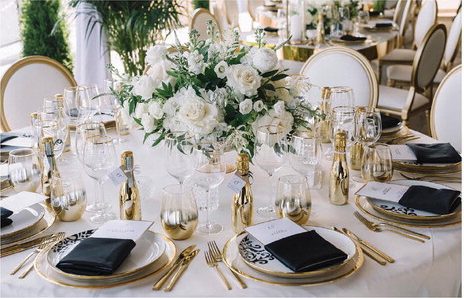Consider wedding flowers carefully


Although many decorative elements help create ambiance for a wedding celebration, perhaps none is more awe-inspiring, than beautiful floral arrangements. Flowers offer visual appeal, captivating aromas and texture, that can make a space more welcoming.
Engaged couples typically go to great lengths, when planning their weddings, but flowers may not be as micromanaged as other elements. Some are content to let florists design their arrangements, but the average cost of wedding flowers in 2023, was $2,800.
That price tag merits some input on the part of couples. Floral experts say couples should budget for floral arrangements coming in at 10 percent of the overall wedding budget, which is the industry standard. Therefore, for a $60,000 wedding, a couple should assume their florals will cost $6,000.
It’s important to note that the cost of wedding flowers has steadily increased over the last few years, because of inflation and climate change.
So, couples may need to be even more involved in floral decisions, to maximize their dollars spent.
Here are some variables to consider, when selecting wedding flowers:
Greenery – Adding greenery to fill in spaces in floral arrangements can save some money. Centerpieces and bouquets that are floral-heavy, will certainly cost more.
Symbolism – Consider the meaning behind flowers, to make choices even more personal. You also may want to select flowers that will complement the theme of the wedding. For example, traditional spring blooms, like tulips and daffodils, will coordinate with spring weddings.
Flower varieties – Hardier varieties of flowers, such as daisies, mums, carnations and protea, are less likely to wilt quickly in bouquets or centerpieces, than some other blooms, even when they are cut. Such blooms can hold up in any weather and last the entire day, so that arrangements will be picture-perfect, no matter the hour.
Venue – Couples may find that some venues already have faux flowers or other decor. That may mean couples do not need to have as many flowers or any elaborate arrangements.
Size – A particularly large floral centerpiece can overwhelm a table and a bouquet that is overly cumbersome, may detract from the bride or her bridesmaids. Choose the correct scale for comfort in bouquets. For table arrangements, select a size that will not discourage conversation or block guests’ view, nor take up too much real estate on the table.
Allergies – Although they are cut, flowers in arrangements can trigger allergic responses in some people. Others may be bothered by overly aromatic flowers. Work with the florist to find blooms that will be best.
Color scheme – Although white flowers always coordinate, many couples like some color in their arrangements. Be sure the flowers pick up the hues used in bridesmaid dresses or even the season of the year.
Couples should take an active role in deciding what to include in floral pieces for their weddings.
